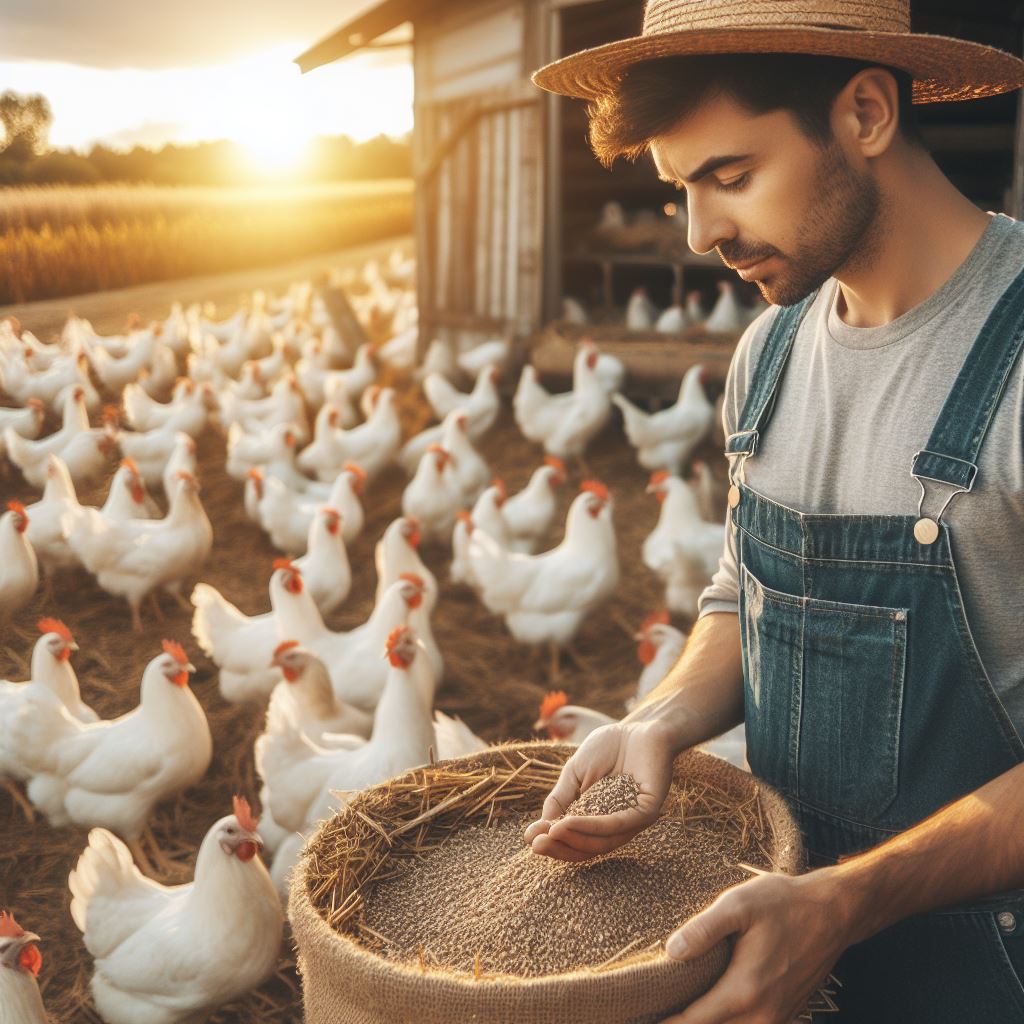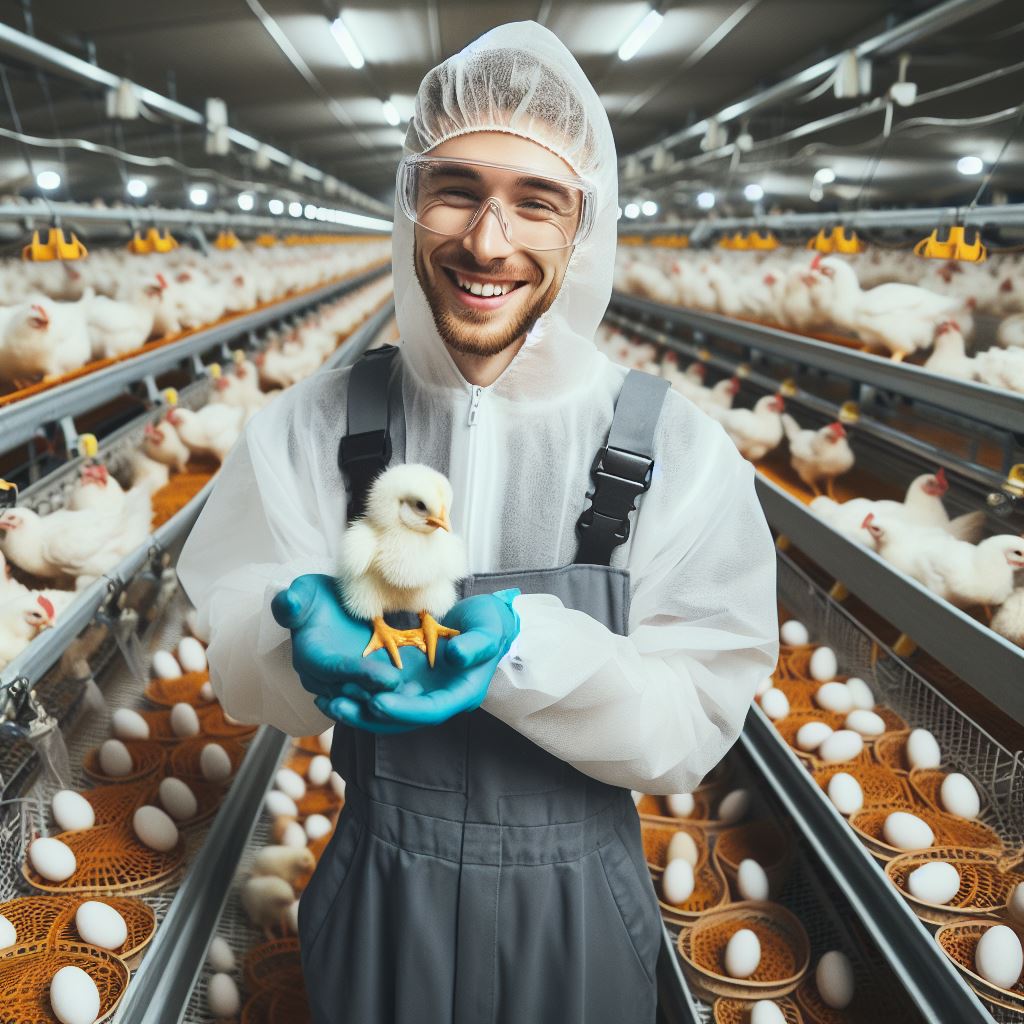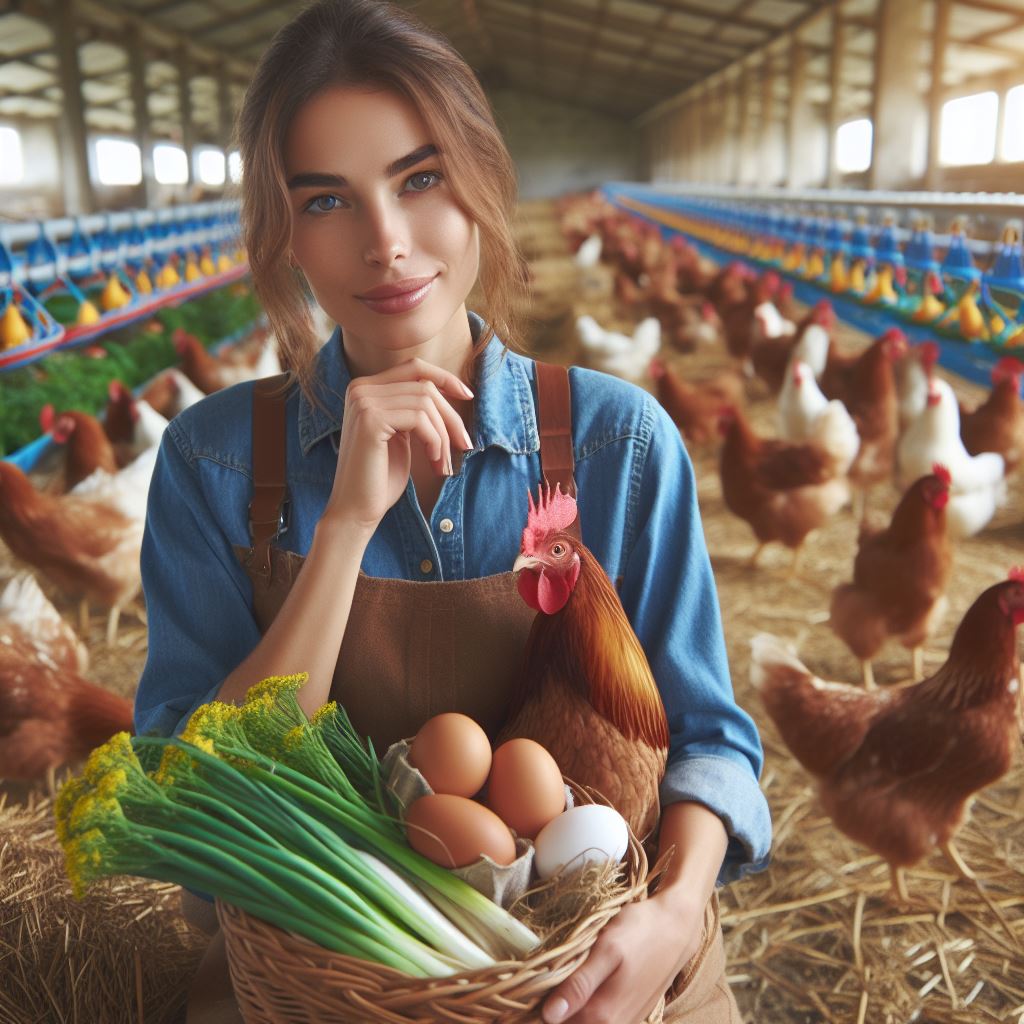Introduction
Importance of pasture management
Seasonal strategies are essential for effective pasture management throughout the year.
They involve adapting management practices according to the changing needs of the pasture and the livestock.
By implementing these strategies, farmers can maximize the quality and quantity of the available forage.
Brief overview of seasonal strategies
During the spring season, it is crucial to focus on pasture growth and renovation.
This involves proper fertilization, weed control, and ensuring adequate grazing rotations to allow for uniform regrowth.
By promoting healthy pasture growth during this time, farmers can ensure a plentiful supply of high-quality forage for their livestock.
As summer arrives, water management becomes a key concern.
Providing adequate water sources and implementing rotational grazing helps prevent overgrazing and ensures even distribution of grazing pressure.
Monitoring the pasture regularly for weeds and parasites is also important during this season.
Fall brings the need for pasture renovation as the growing season slows down.
Farmers should consider overseeding and establishing cover crops to extend the grazing season and provide additional nutrients for the livestock.
Additionally, soil conservation practices should be implemented to prevent erosion during heavy rains.
Finally, winter requires careful planning to maintain feed availability.
Ensuring access to shelter, supplemental feed, and clean water is essential to keep livestock healthy during this challenging season.
Pasture rest and soil testing can also be conducted to prepare for the upcoming spring.
Transform Your Agribusiness
Unlock your farm's potential with expert advice tailored to your needs. Get actionable steps that drive real results.
Get StartedTherefore, seasonal strategies play a vital role in pasture management, promoting proper forage growth and ensuring the health and productivity of livestock.
By adapting management practices throughout the year, farmers can optimize the use of pasture resources and maintain the sustainability of their operations.
Spring Strategies
Rotational grazing
Rotational grazing is an essential part of pasture management during the spring season.
It involves dividing the pasture into several smaller paddocks and moving livestock to a fresh paddock regularly.
This method provides various benefits:
Benefits
- Improved forage utilization: Rotational grazing allows livestock to graze on fresh vegetation continuously, resulting in better forage consumption and utilization.
- Increased pasture productivity: By rotating livestock to different paddocks, resting periods for grass regrowth are enhanced, leading to increased pasture productivity.
- Weed control: Regular rotational grazing helps control weed growth as livestock consume the young, undesirable plants, preventing them from spreading.
- Manure distribution: Rotational grazing facilitates uniform manure distribution across the pasture, ensuring even nutrient distribution.
Considerations
- Proper fencing: To implement rotational grazing, it is essential to have appropriate fencing to divide the pasture into manageable sections.
- Water availability: Each paddock should have a reliable water source to meet the livestock’s drinking needs.
- Monitoring forage growth: Regular monitoring of forage growth allows for timely rotation and prevents overgrazing.
Fertilization
Fertilization is another crucial aspect of pasture management in the spring.
Adequate fertilization ensures optimal pasture growth and nutrient availability for livestock.
Here are some important considerations:
Importance
- Improved nutrient content: Fertilizers provide essential nutrients like nitrogen, phosphorus, and potassium, promoting healthy pasture growth.
- Increased yield: Proper fertilization enhances forage production, resulting in higher yield and better grazing opportunities for livestock.
- Soil health maintenance: Fertilizers help maintain soil fertility by replenishing nutrient levels depleted by grazing and other factors.
Types of fertilizers
- Synthetic fertilizers: These are commercially manufactured fertilizers that provide specific nutrient ratios based on soil test results.
- Organic fertilizers: These include natural materials like manure, compost, and organic waste, which improve soil structure and nutrient content.
- Lime application: Lime raises soil pH levels, which is essential for optimal pasture growth and nutrient uptake.
Application methods
- Broadcasting: This method involves spreading fertilizer evenly across the pasture surface using a spreader or manually.
- Spot application: Spot application targets specific areas that require additional nutrients, such as high-traffic areas or areas with poor soil fertility.
- Timing: Fertilizers should be applied at the right time, ideally before or during periods of active growth, to maximize nutrient uptake.
Most importantly, implementing rotational grazing and proper fertilization practices are vital for effective pasture management during the spring season.
These strategies enhance forage utilization, improve pasture productivity, control weeds, and ensure nutrient availability for livestock.
Considerations such as proper fencing, water availability, soil monitoring, and selecting the right type and application method of fertilizers contribute to successful pasture management.
Read: Rotational Grazing: A Complete Guide

Summer Strategies
Stock density management
During the summer season, it is crucial to manage stock density effectively to ensure optimal pasture utilization and animal performance.
Adjusting stocking rates can help achieve these goals.
The reasons for adjusting stocking rates are multifaceted.
Firstly, it allows for better forage utilization, ensuring that animals can efficiently graze on available pasture.
This prevents underutilization or overgrazing, which can lead to reduced forage production and pasture degradation.
Secondly, adjusting stocking rates takes into account carrying capacity.
By not exceeding the pasture’s capacity to support animals, it avoids resource depletion and maintains the health of the ecosystem.
Balancing stocking rates with carrying capacity contributes to the sustainability of the pasture management system.
Irrigation
Irrigating pastures in the summer season brings numerous benefits in terms of forage production and quality.
It can significantly increase the overall growth and yield of grasses and legumes.
One of the primary benefits of irrigation is increased forage production.
By providing sufficient water to the pasture, it supports the growth of plants, enabling them to produce more biomass.
Showcase Your Farming Business
Publish your professional farming services profile on our blog for a one-time fee of $200 and reach a dedicated audience of farmers and agribusiness owners.
Publish Your ProfileThis results in higher forage availability for grazing animals.
Furthermore, irrigated pastures tend to have improved forage quality.
The availability of water ensures that plants can maintain their nutritional content, leading to higher protein levels and better digestibility.
This supports animal performance and allows for more efficient weight gain.
Several irrigation methods can be employed, depending on the farm’s resources and requirements.
Surface irrigation, sprinkler irrigation, and drip irrigation are common methods used in pasture management.
When considering irrigation, water management becomes a critical factor.
Monitoring soil moisture levels is essential to ensure plants receive adequate water without causing waterlogging or drought stress.
The scheduling of irrigation is vital to provide water at the most opportune times for plant growth.
Preventing water runoff is another consideration in water management.
Implementing measures such as contouring, terracing, or constructing berms can help retain water within the pasture and prevent soil erosion.
In essence, effective pasture management during the summer season involves strategic stock density management and irrigation practices.
Adjusting stocking rates based on forage availability and carrying capacity ensures optimal pasture utilization and sustainability.
Irrigating pastures brings benefits such as increased forage production and improved forage quality.
Choosing the appropriate irrigation method and managing water effectively contribute to successful summer strategies for pasture management.
Read: 5 Key Soil Health Tips for Better Pastures
Fall Strategies
Fall is a crucial season for pasture management as it sets the stage for the upcoming winter and spring.
Proper planning and execution of fall strategies are vital for maintaining healthy and productive pastures.
This section will delve into two key aspects of fall pasture management: pasture renovation and winter forage planning.
Pasture renovation
Importance of rejuvenating pastures
Pasture renovation plays a critical role in maintaining optimal forage quality and quantity.
Over time, pastures can become depleted of desirable forage species, resulting in reduced productivity and nutrient deficiencies.
Renovating pastures during the fall helps restore vigor and productivity.
Methods for pasture renovation
There are several methods for pasture renovation, including overseeding, interseeding, and complete renovation.
Overseeding involves broadcasting seed onto an existing pasture, while interseeding involves drilling seed into the existing forage stand.
Complete renovation, on the other hand, involves killing the existing stand and starting from scratch.
Regardless of the method chosen, it is essential to select high-quality seeds that are well-adapted to the region and the desired forage goals.
Conducting soil tests before renovation can also help identify any nutrient deficiencies that need to be addressed.
Winter forage planning
Selecting appropriate winter forage options
Proper winter forage planning ensures adequate nutrition for grazing animals during the colder months.
When selecting winter forage options, consider factors such as palatability, nutritional value, and cold tolerance.
Common winter forages include ryegrass, wheat, and clovers.
It is crucial to choose varieties that are well-suited to the local climate and soil conditions.
Consulting with local extension offices or agronomists can provide valuable insights based on regional expertise.
Seeding and establishment guidelines
Once winter forage options are selected, it is essential to follow proper seeding and establishment guidelines.
This includes preparing the seedbed adequately, ensuring good seed-to-soil contact, and providing optimal soil moisture for germination.
Seeding rates should be adjusted based on the chosen forage species and desired grazing intensity.
Adequate fertility management, including soil amendments and fertilization, is crucial for successful establishment and growth of winter forages.
Monitoring and adjusting grazing pressure during the winter is equally important to prevent overgrazing and allow for regrowth in spring.
Implementing rotational grazing systems and utilizing temporary fencing can help manage grazing intensity effectively.
In fact, fall strategies are key to successful pasture management.
Pasture renovation rejuvenates tired pastures, while winter forage planning ensures adequate nutrition during the colder months.
Showcase Your Farming Business
Publish your professional farming services profile on our blog for a one-time fee of $200 and reach a dedicated audience of farmers and agribusiness owners.
Publish Your ProfileBy following proper methods and guidelines, farmers and ranchers can optimize forage quality and productivity for the benefit of their livestock and overall farm profitability.
Read: Beef Cattle Grazing: Best Practices
Winter Strategies
The winter season poses unique challenges for pasture management.
It is essential to implement proper strategies to ensure the well-being of livestock and maintain the health of the pasture.
Hay feeding management
Proper utilization of hay resources
During winter, when fresh forage is scarce, hay becomes a crucial feed source for livestock.
To effectively manage hay resources, it is important to have a well-planned feeding system.
This includes calculating the appropriate amount of hay required for the livestock and properly storing the hay to minimize spoilage and wastage.
Feeding techniques to minimize waste
Feeding hay in a manner that minimizes waste is essential to optimize the use of available resources.
Employing feeding methods such as utilizing hay feeders or feeding on clean surfaces can help reduce hay trampling and soiling.
Implementing rotational feeding practices can also prevent selective feeding and ensure all livestock have access to adequate nutrition.
Grazing rest periods
Giving pastures adequate rest during winter
Pastures require adequate rest during the winter season to recover and promote regrowth.
Allowing pastures to rest helps maintain the integrity of the root system and prevent soil compaction.
Rotating livestock between different grazing areas can help ensure each section gets sufficient rest and recovery time.
Monitoring for overgrazing
Continuous monitoring of grazing intensity is crucial during winter, as limited forage availability can lead to overgrazing and degrade pasture conditions.
Proper assessment of forage supply and livestock demand should be conducted to avoid excessive grazing pressure.
If signs of overgrazing are observed, adjustments should be made to the grazing management plan, such as reducing stocking rates or implementing temporary exclusion areas.
By implementing these winter strategies, pasture managers can ensure the sustainable use of hay resources and maintain healthy pastures.
Effective hay feeding management minimizes waste and maximizes the nutritional value of hay, resulting in optimal livestock performance.
Adequate rest periods and monitoring for overgrazing support the long-term productivity and resilience of pastures.
In short, winter pasture management requires careful attention to hay feeding and grazing rest periods.
Engaging in proper utilization of hay resources and employing feeding techniques to minimize waste are essential.
Additionally, giving pastures adequate rest and monitoring for overgrazing during winter ensures the health and productivity of the pasture in the long run.
As responsible managers, it is crucial to implement these strategies to maintain sustainable and effective pasture management throughout the winter season.
Read: Quail Nutrition: What to Feed for Best Results
Conclusion
Our exploration of seasonal pasture management, let’s revisit key strategies for optimal results.
Spring signifies renewal—reseeding pastures fuels vibrant growth.
In summer, strategic livestock rotation prevents overgrazing, ensuring long-lasting pastures.
Transitioning to fall, prioritize weed control and soil testing for robust spring resurgence.
Adapting management practices based on the season is paramount.
A dynamic approach, tailored to seasonal demands, ensures sustained productivity.
Vigilance year-round guarantees high forage quality, healthy livestock, and resilient pastures.
I encourage readers to implement these strategies actively.
Proactive planning, guided by seasonal nuances, unlocks the full potential of pastures.
Embrace adaptable practices for sustainable success—let’s cultivate thriving landscapes year-round.




